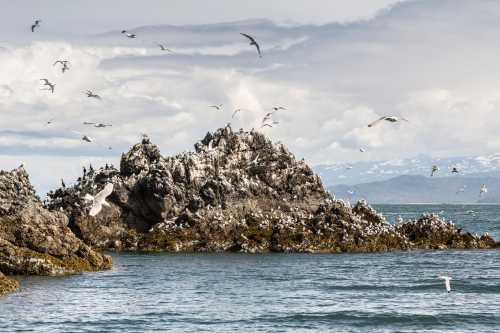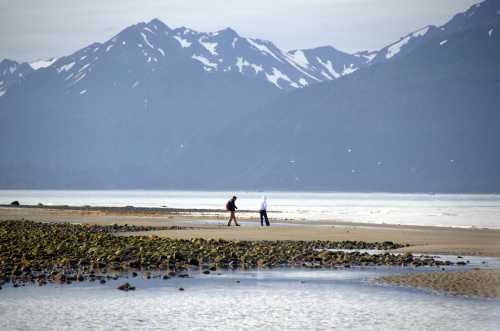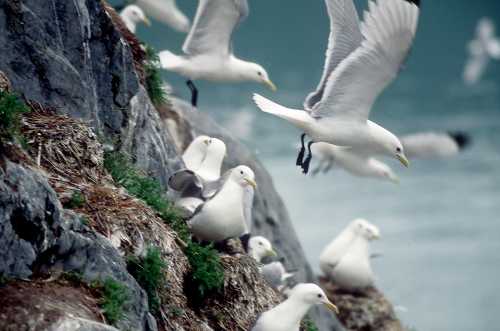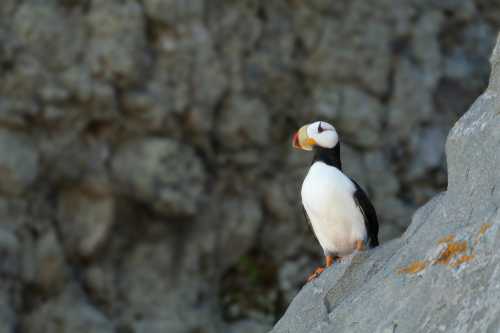In the harsh conditions of the Bering Sea lies an abandoned island with dwellings clinging to the cliffs. The Inupiaq people who lived here in the past hunted and thrived while living a nomadic subsistence lifestyle. King Island was the winter home for around 200 people from long ago until the 1940's, but no one has lived in the village since the 1959 when the school was closed. The remaining structures are simple homes built into the cliffs, now crumbling from the harsh winter conditions. When you are on the Seward Peninsula, head 90 miles north of Nome to see King Island from the mainland. These cliff dwellings are a fascinating adaptation to the conditions in the Bering Sea.
Interactive Map here of King Island here.
Viewing King Island:
With the treacherous Bering Sea and the dilapidated state of the King Island buildings, viewing King Island from the Seward Peninsula is a better choice than trying to land on the island. From the Bob Blodgett Highway north of Nome, you can catch a great view of King Island for several miles of highway on a clear day. The highway is only open in the summer months.
King Island lies in the Bering Sea and was at one time a thriving community of 200 residents. No one has lived here since the 1950's and the dwellings are falling into ruin in the harsh conditions.
The dwellings are built on stilts and nestled into the cliffs. This location was ideal for hunting walrus and seals that traveled through the Bering Strait and the village was primarily utilized in the winter months.
The buildings were constructed on stilts and most had a small deck around the edges for climbing from one to the next. The treeless, rocky, steep hillside was hard to live on, but there were defensive advantages to the view from the top.
The island has a highest point over 700 feet, and yet is just a mile wide. The island was originally called Ukivok, but Captain Cook gave the island it's western name of King Island after one of his crew members.
The people hunted walrus and seal for meat and oil, used for cooking and heating, and used the ivory for carving household and hunting tools. They created umiaqs, large open boats made from the walrus hides and collected hides to trade.
The people of King Island were called Aseuluk, meaning "People of the Sea", or Ukivokmuit. It is unclear how long villagers lived clinging to the rocks, but it could be thousands of years.
King Islanders have kept their community and cultural identity alive and every summer they camp at the Woolley Lagoon where they continue to catch and dry salmon and gather greens and berries.
Rock formations on King Island at the top of the hill.
The clever building style and the resilience of the houses against the conditions, even long after the village was abandoned, has lead anthropologists to study the construction style.
Visit the viewing area for this abandoned village in the Bering Sea, a fascinating example of a community adapting to harsh arctic conditions and thriving in them.
Watch a video about King Island here:
If you like to explore the past, We Checked Out The 13 Most Terrifying Places In Alaska And They’re Horrifying. More about King Island in The Historic Island Town In Alaska With A Sinister And Terrifying History.
Have you been to King Island? Tell us about it in the comments below.
Subscribe to our newsletter
Get the latest updates and news
Thank you for subscribing!
























